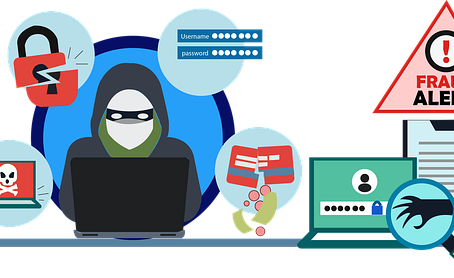9 Types of Phishing Attacks
Share

image courtesy pixabay.com
Phishing attacks, a form of cybercrime, have evolved over the years, becoming increasingly sophisticated and harder to detect. These attacks employ various tactics to trick individuals into revealing sensitive information like passwords, credit card details, or personal identification numbers. In this blog, we will examine the different types phishing attacks, and how to protect yourself from falling victim.
Email Phishing
Email phishing is perhaps the most prevalent form of phishing. Attackers send deceptive emails impersonating legitimate organizations or individuals, often enticing the recipient to click on malicious links or download malicious attachments. These emails may request personal information or direct the user to a fake website that looks authentic, prompting them to enter confidential data.
The key to avoiding email phishing is to scrutinize the sender’s email address, check for grammatical errors, and avoid clicking on suspicious links or downloading attachments from unknown sources. Additionally, employing email filtering systems and educating users about the signs of phishing can significantly mitigate risks.
Spear Phishing
Spear phishing implements highly targeted attacks on specific individuals or organizations. The attackers conduct extensive research to tailor the phishing attempt, making it appear credible and relevant to the target. This often includes gathering personal information from social media, corporate websites, or public databases.
To defend against spear phishing, individuals and organizations should exercise caution while sharing personal details online. Training and educating employees to recognize and report suspicious emails, even if they seem to come from trusted sources, are vital in preventing successful spear phishing attacks.
Whaling Attacks
Whaling attacks are a subtype of spear phishing that specifically targets high-profile individuals within an organization, such as CEOs, CFOs, or other top executives. The aim is to gain access to critical business information or financial data. The techniques used in whaling attacks are often sophisticated, leveraging social engineering and carefully crafted emails to deceive the target.
Protection against whaling attacks involves implementing strong email authentication protocols, educating executives about the risks, and enforcing a culture of security within the organization.
Clone Phishing
Clone phishing involves creating a replica of a legitimate email or communication that has already been delivered to a recipient. The attacker replaces legitimate links or attachments with malicious ones, tricking the recipient into divulging sensitive information. The cloned message appears nearly identical to the original, making it difficult to detect.
Vigilance and a critical eye are crucial in identifying clone phishing attempts. If you receive an email that seems suspicious, especially if it’s a duplicate of a previous communication, contact the sender via a known, separate channel to confirm the legitimacy of the message.
Vishing
Vishing involves using phone calls to deceive individuals into revealing sensitive information. The attacker might pose as a legitimate entity, like a bank or government agency, and request personal details or financial information over the phone. These calls are often urgent or threatening, creating a sense of pressure on the victim.
To protect against vishing, never share personal or financial information over the phone unless you have initiated the call and are certain of the recipient’s identity. If you receive such a call, hang up and contact the organization directly through their official contact details.
SMS/Text Message Phishing
Similar to email phishing, smishing involves sending deceptive text messages to trick individuals into clicking on malicious links or providing sensitive information. The messages often create a sense of urgency, pushing the recipient to take immediate action.
Avoid responding to suspicious text messages, especially those requesting personal or financial information. If you doubt the legitimacy of a message, contact the organization directly using trusted contact information to verify the request.
Malware-Based Phishing
Malware-based phishing involves distributing malicious software through various channels, including email, social media, or websites. Once the malware is downloaded, it can steal sensitive information, record keystrokes, or even take control of the victim’s system.
To defend against malware-based phishing, ensure your devices have updated antivirus software, regularly update your operating system and applications, and avoid downloading files or clicking on links from unknown or untrusted sources.
Man-in-the-Middle (MitM) Attacks
MitM attacks involve intercepting communication between two parties, allowing the attacker to eavesdrop, modify, or inject malicious content. This can occur in various forms, including email, websites, or even public Wi-Fi networks.
To protect against MitM attacks, use encrypted communication channels (like HTTPS), avoid using public Wi-Fi for sensitive activities, and employ Virtual Private Networks (VPNs) for secure browsing.
Search Engine Phishing
In this type of phishing, attackers create fraudulent websites designed to appear as legitimate entities. They manipulate search engine results to ensure their malicious websites rank high, increasing the likelihood of users visiting them.
Always verify the URL and website domain before providing any personal information. Instead of clicking on links from search results, manually type the URL of the website you want to visit to minimize the risk of falling victim to search engine phishing.
Final Note
Phishing attacks continue to evolve, posing a significant threat to individuals and organizations alike. Awareness, education, and vigilance are paramount in defending against these deceitful attempts to compromise sensitive data. By understanding the various types of phishing attacks and implementing appropriate preventive measures, you can significantly reduce your risk of falling prey to cybercriminals. Stay informed, stay cautious, and stay protected in the digital domain.


